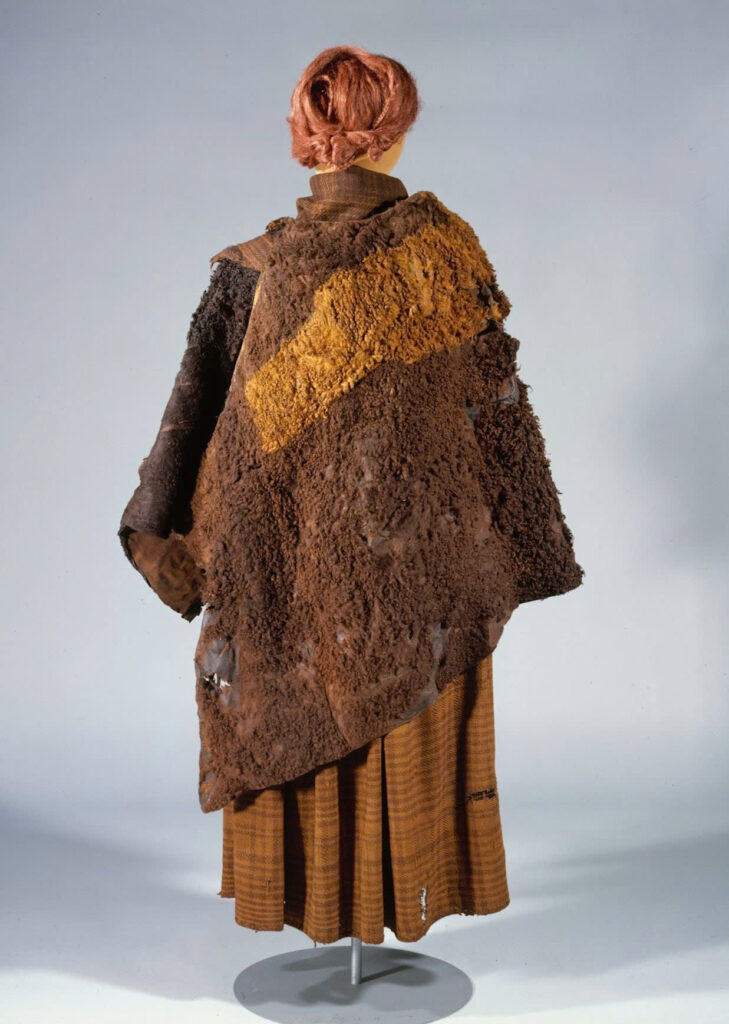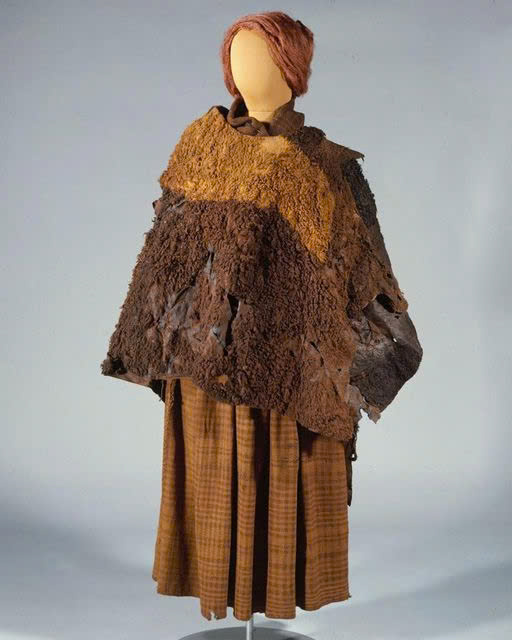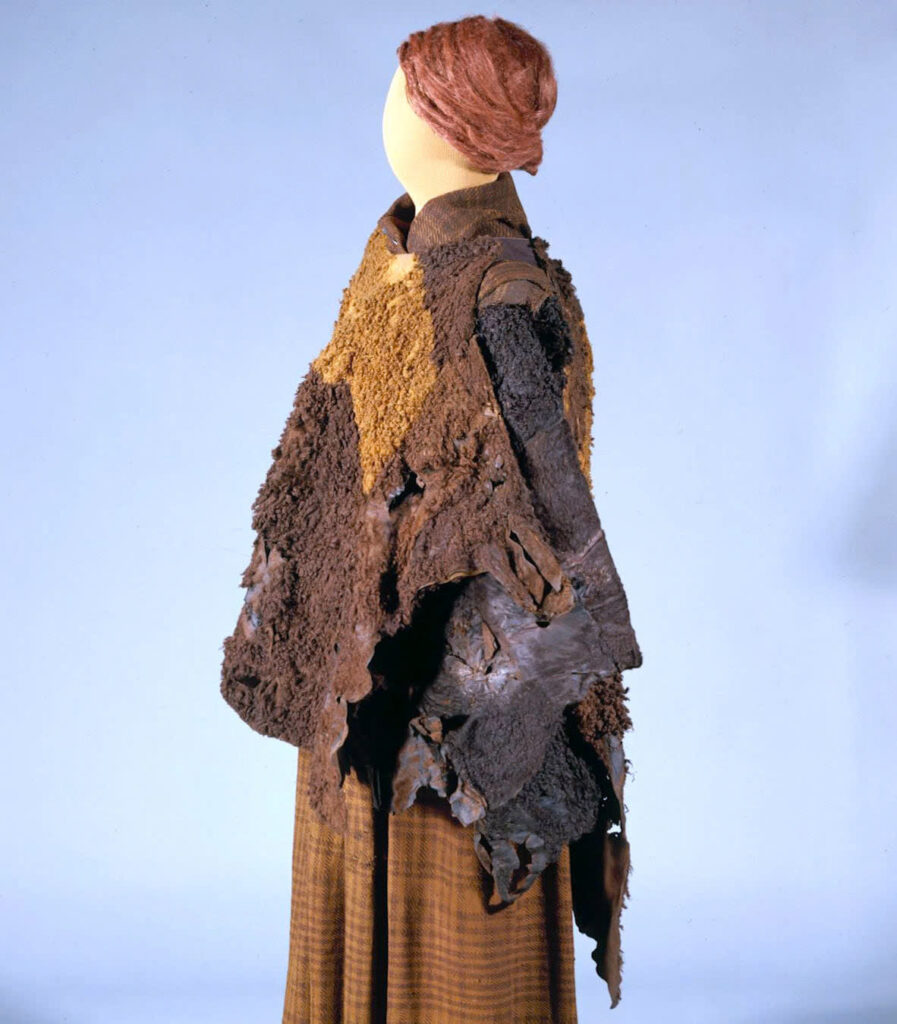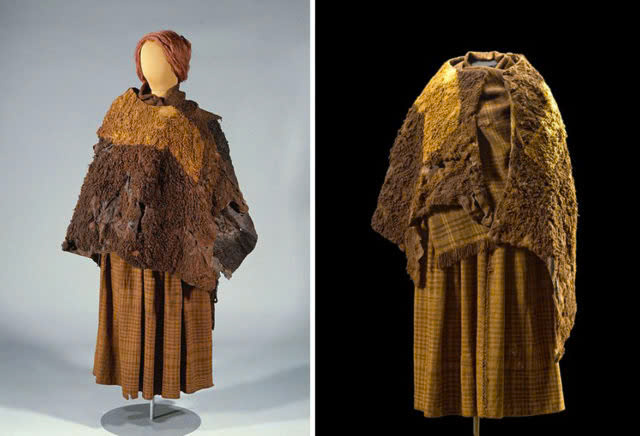In the quiet peatlands near Ramten, Denmark, an extraordinary discovery in 1879 opened a window into the distant past. Local peat cutters, going about their daily work, unearthed what would become one of archaeology’s most significant textile finds—the remarkably preserved clothing of a woman who lived some 2,000 years ago. Today, these ancient garments continue to tell their story from their home in the National Museum of Denmark, offering us a rare and intimate connection with our Iron Age ancestors.
An Unexpected Treasure from the Bog
When the peat cutters first spotted unusual materials emerging from the dark soil, they could hardly have imagined they were uncovering a complete Iron Age wardrobe. The preservative environment of the bog had protected these fragile textiles for two millennia, defying time itself. The Huldremose Woman’s ensemble—comprising a meticulously crafted checked woollen skirt, a matching scarf, and two animal skin capes—emerged in a state of preservation that continues to astonish researchers and visitors alike.

The bog’s unique chemical composition had performed a remarkable feat of preservation, allowing modern eyes to gaze upon garments worn when the Roman Empire was still expanding its reach across Europe. This fortuitous conservation provides an unparalleled opportunity to study ancient textile techniques, fashion choices, and daily life practices from a period that left few material remains.
The Artistry of Ancient Hands
Masterful Weaving Techniques
The checked woollen skirt and matching scarf reveal sophisticated textile production capabilities that challenge any notion of “primitive” craftsmanship. These weren’t merely functional items but expressions of artistic skill and cultural identity. The intricate patterns woven into the fabric required considerable expertise and attention to detail, suggesting a well-established weaving tradition.

The high quality of these woollen garments points to advanced sheep husbandry and wool processing in Iron Age Danish communities. From selecting and sorting wool to spinning thread and operating looms, each step in creating these textiles required specialized knowledge passed down through generations. The careful construction suggests these garments may have carried social significance beyond their practical purpose, possibly indicating the wearer’s status within her community.
The Protective Embrace of Skin Capes
Complementing the woollen garments, two skin capes provided essential protection against Denmark’s harsh Nordic climate. These capes, fashioned from animal hides, demonstrate the resourcefulness of ancient Danish people in utilizing available materials from their environment.
The construction of these capes reveals sophisticated knowledge of animal processing techniques. Selecting appropriate hides, treating them for durability and comfort, and crafting them into wearable garments required expertise developed over centuries. These capes represent not just practical necessities but a cultural tradition connecting humans with the wildlife that sustained them.
Weaving Together the Past and Present
Insights into Iron Age Danish Society
Each carefully preserved stitch and thread provides researchers with valuable clues about social structures, gender roles, and economic systems of the time. The quality and complexity of the Huldremose Woman’s garments suggest a society with specialized craft roles and established trading networks for materials and design inspiration.

The clothing also offers glimpses into daily life during the Iron Age—what materials were available, how resources were managed, and what aesthetic values guided creative expression. These garments embody the practical concerns, cultural traditions, and artistic sensibilities of a people separated from us by two millennia yet connected through our shared humanity.
Video
Preserving Cultural Heritage Through Modern Analysis
Today, cutting-edge archaeological techniques continue to reveal new information about these ancient garments. Scientific analysis of fibers, dyes, and construction methods provides increasingly detailed understanding of textile production chains and resource management in ancient Denmark.
As researchers apply new technologies and analytical approaches, the Huldremose Woman’s clothing continues to share its secrets, enriching our understanding of our collective human journey. These studies ensure that the knowledge and skills of ancient textile artisans aren’t lost to time but remain part of our shared cultural heritage.
The Enduring Legacy of Ancient Textiles
The Huldremose Woman’s wardrobe stands as a powerful reminder that clothing has always been more than mere protection—it represents cultural identity, artistic expression, and technological innovation. These ancient garments continue to inspire modern designers, archaeologists, and historians alike.

As we contemplate these remarkably preserved textiles, we’re invited to consider our own relationship with clothing and material culture. The Huldremose Woman’s garments transcend their original function to become messengers from the past, connecting human experiences across vast stretches of time and reminding us of the ingenuity and creativity that have always characterized our species.
Through careful preservation and ongoing research, the legacy of the Huldremose Woman’s clothing will continue to educate and inspire future generations, ensuring that these ancient textile traditions remain woven into our collective memory—threads connecting past, present, and future in the grand tapestry of human history.

